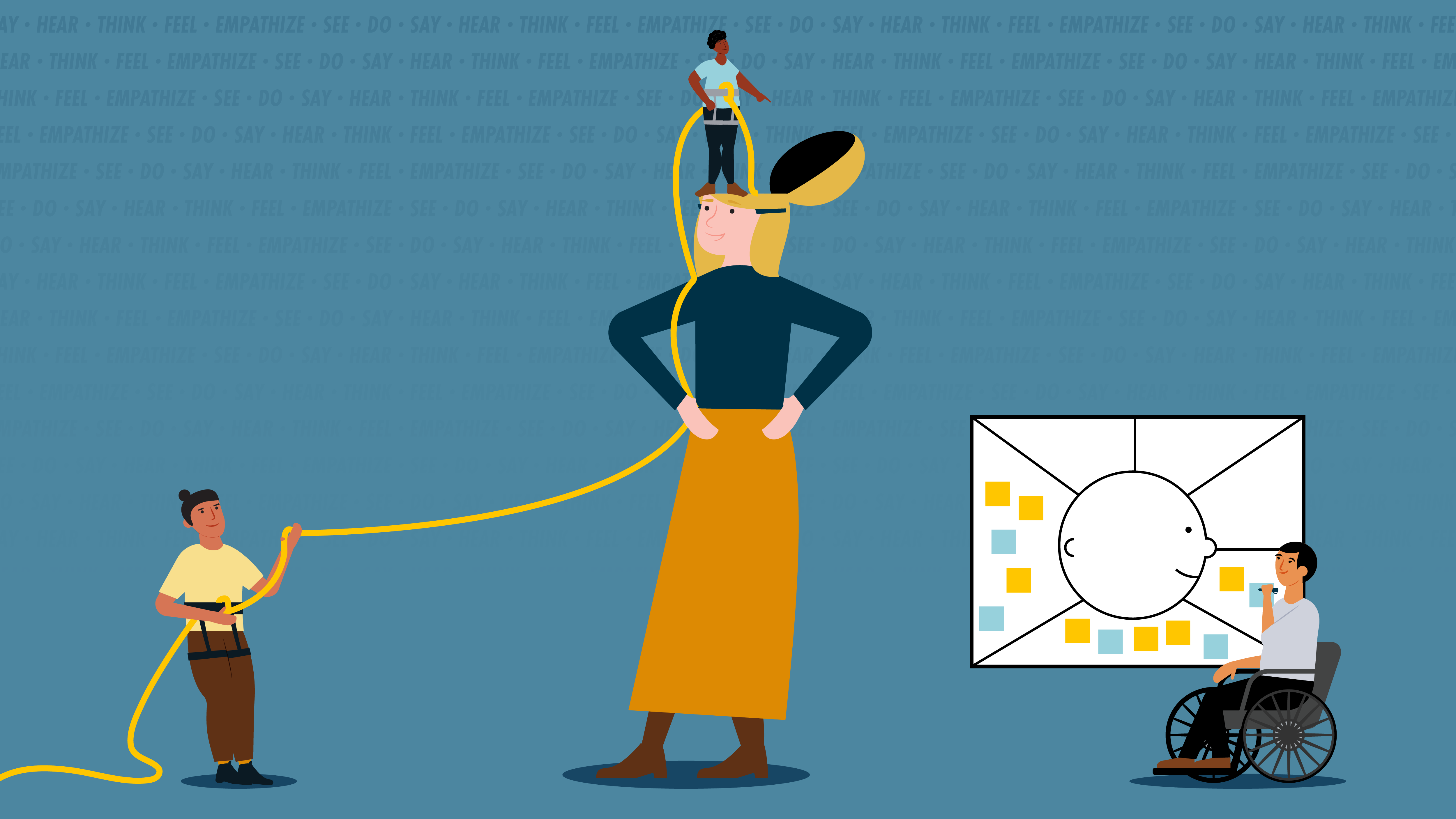The humble empathy map is a powerful tool for understanding audiences whether designing information graphics, products, services, or experiences for people. Here’s a look at how empathy mapping came to be—and how to make it work for you.
Let’s get inside your head a bit. In fact, let’s climb all the way in.
Wow. Look at everything going on in here! There are some interesting thoughts. I see you have some feelings, and I’ve got a front-row seat to all you’re seeing, doing, saying, and hearing. Oh, look over there! I see some of the pressures, challenges, and fears you’re facing, and up here are hopes, aspirations, and dreams. This is really illuminating.
You see, I design things for people like you. By allowing me inside your head, you’re giving me a more concrete understanding of how I can create something that resonates with and is useful to you.
If only.
The ability to step inside a person’s head to completely understand them and design innovative solutions for them is a designer’s dream.
While we’re a few years away from having the technology to do this, we do have the next best thing: the Empathy Map.
This humble tool has become quite ubiquitous in a short amount of time. How long has the Empathy Map been a thing?
Well, let me take you down a rabbit hole, back to a time when the young, scrappy design consultancy XPLANE was making beautiful information maps and graphics to help people better understand and deploy strategy.
At the time, you might have been listening to “Crazy” by Gnarls Barkley or “You’re Beautiful” by James Blunt. Yes, I’m talking about the mid-2000s.
The Origin
Back at that time, XPLANE’s then Creative Director, Scott Matthews, was drawing what we called “big heads” to capture ideas about the people for whom we were designing.
Matthews took a caricature approach to the drawings, capturing information inside the head or outside the sketch, depending on the project and the need.
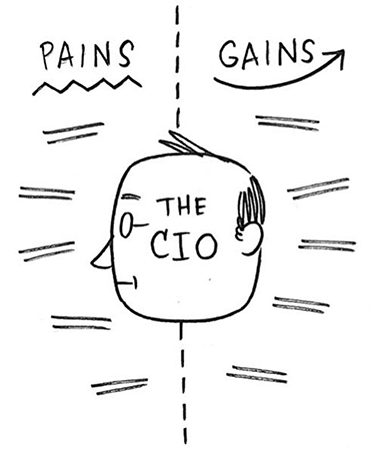
These drawings were co-created as part of XPLANE’s discovery process, which includes capturing ideas on sticky notes as people share insights about the role being explored.
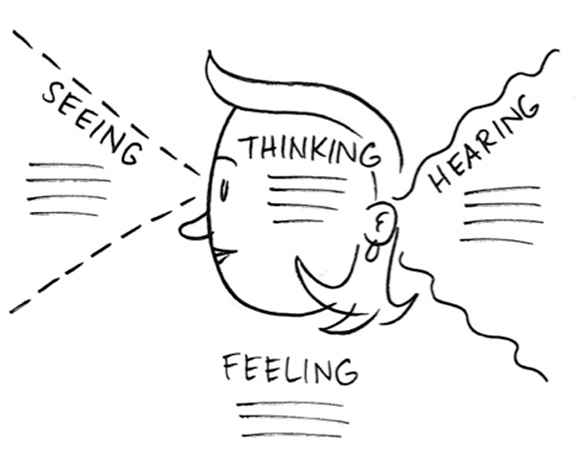
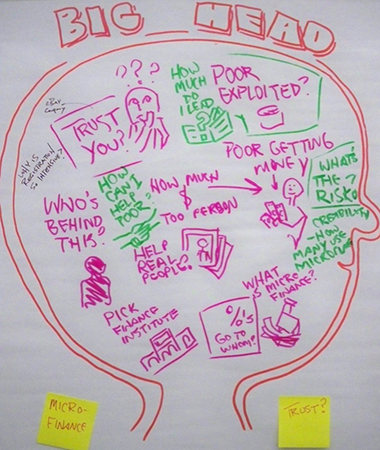
The Publication
XPLANE’s founder, Dave Gray, helped refine these ideas into the form of the Empathy Map released in the celebrated 2010 facilitation playbook “Gamestorming,” co-authored by Sunni Brown and James Macanufo.
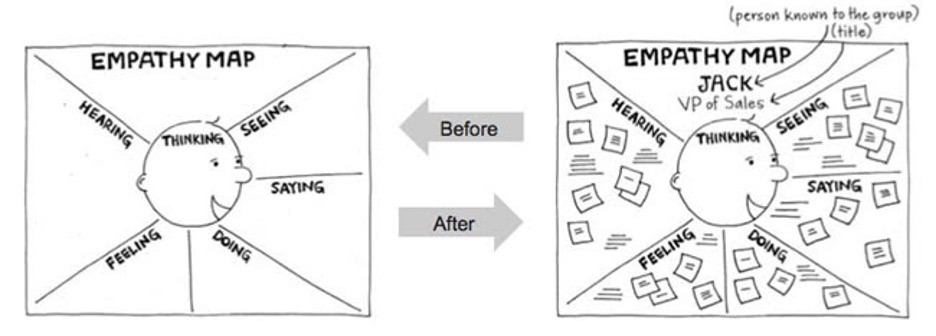
Variants of this version of the Empathy Map have had broad influence and have been included in dozens of facilitation resources, including mentions by the Stanford d.school, Accenture, and the Nielsen Norman Group.
It has also appeared in the Harvard Business Review as a creativity challenge by IDEO’s founder, David Kelley.
In short, the Empathy Map has become a pervasive tool that helps people step inside the heads of their audiences, putting a human-centered framework around co-creating a better picture of who we’re talking to when we design products, services, and experiences for people.
When Should I Empathy Map?
The Empathy Map is most successful when used as a discovery and alignment tool to help people get on the same page and potentially uncover insights around how an audience thinks.
As opposed to working alone, empathy mapping allows a small team of contributors who have some insights into the audience being explored to create a relatively robust picture of the persona.
When time permits, interviews, firsthand and secondhand research, observations, surveys, and other types of research can supplement and fill in blind spots that may have been missed in the initial map.
As most of XPLANE’s work is built around helping people and organizations work better together, we frequently use empathy mapping to understand the pressures and opportunities people in important and influential roles are experiencing.
XPLANE designers and consultants often create two or three primary empathy maps as part of the discovery process. Each map explores a single key role, often someone critical in helping deliver the desired change. The activity is often cathartic as subject matter experts consider the challenges and opportunities faced by their peers. Once completed, we keep the empathy maps on the wall as a reminder, and as a success filter to ensure any solutions we create will answer our personas’ key questions.
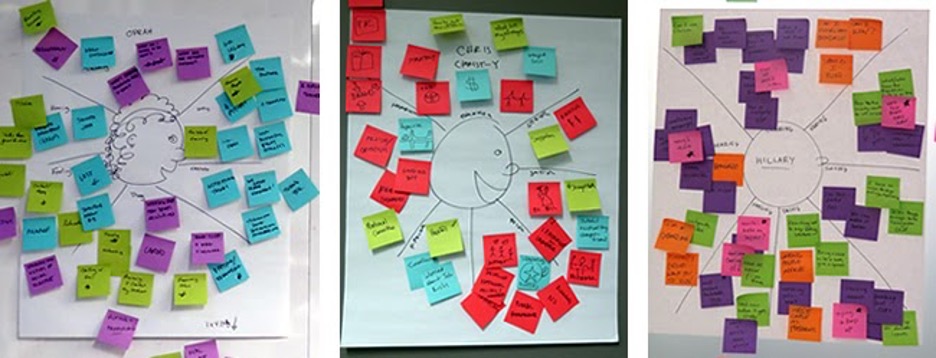
How Do I Empathy Map?
In most XPLANE discovery work, prior to the core empathy mapping exercise, XPLANErs work with teams to define WHO our primary audiences are for the design we’re co-creating and what we want them to DO as a result of our work.
This deceptively simple framework is illustrated in the top two sections of our Empathy Map worksheet.
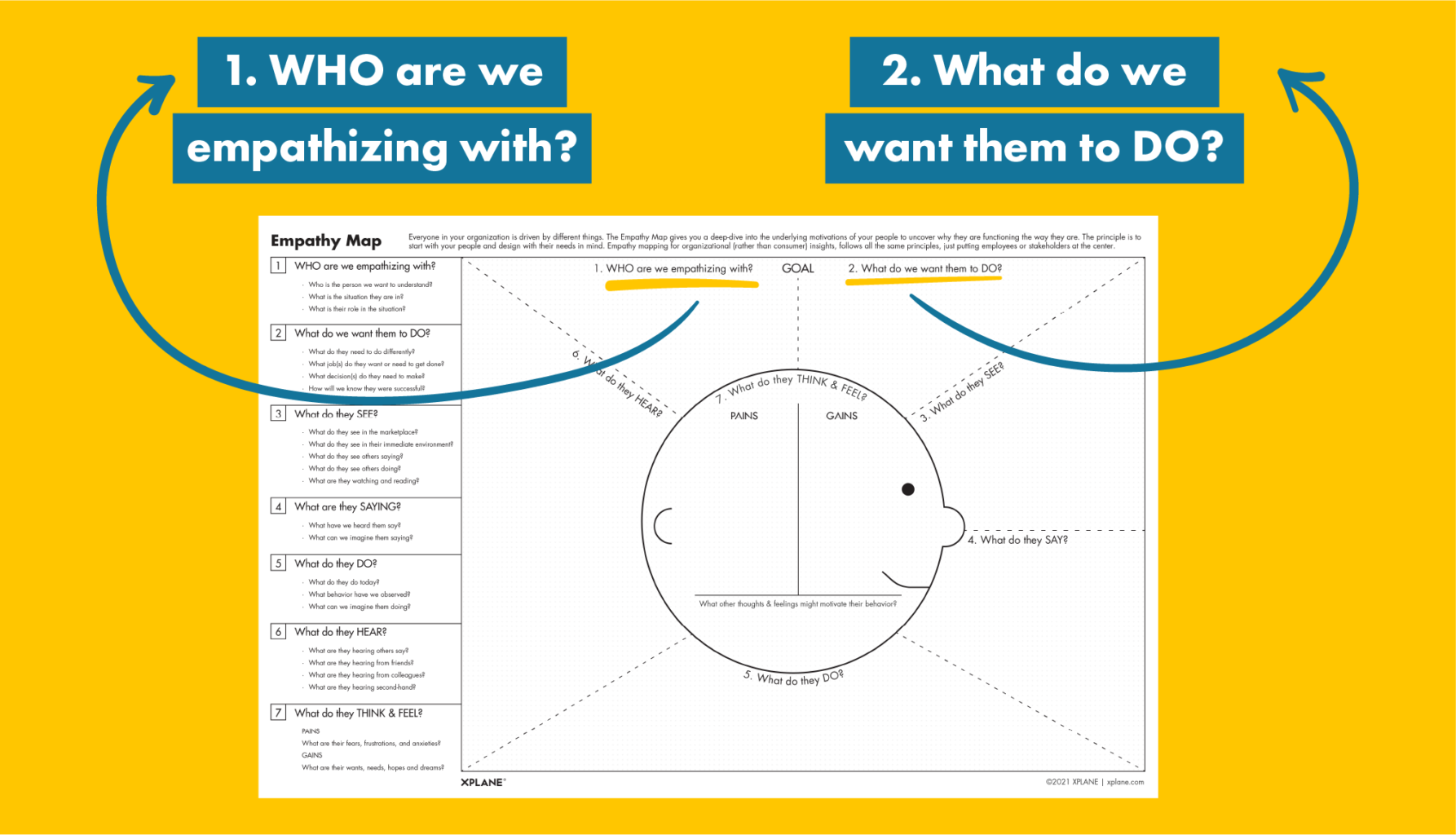
By listing WHO we’re defining this map for and what we want them to DO as a result of our visualization work, we establish a goal and set ourselves some success metrics.
We can then use this information to test our designs by asking, Will this solution help our audience (WHO) do the action we’re looking to see (DO)?
A Deeper Dive
At times, it’s important to go deeper into potential audiences, in which case we run the Who/Do exercise before we create any empathy maps.
When we explore our audience, it helps to ask some provocative questions.
When thinking about what people hear, we might ask:
- What are leaders telling this person?
- Who is influencing this person? (could be publications, forums, etc.)
- What messages is this person hearing from said influences?
When thinking about what people do, we might ask:
- What is the highest priority on this person’s list?
- What thing do they spend most of their time doing?
- What thing do they WANT to spend their time doing?
When thinking about what people see, we might ask:
- How is their world changing?
- What are some market trends that affect this person’s role?
- What are optics within the organization telling them?
When thinking about what people say, we might ask:
- What kinds of things are they telling people?
- What is a key message they share with their peers/teams?
- What do they express as aspirations or pessimism?
In considering what our audience is thinking and feeling, we are looking to understand how they come to decisions and what they might consider pains or gains.
Essentially, this means we want to know some of their fears and hopes. What might be concerning to them? What might be uplifting to them or a cause for optimism?
At this point, we look back at what we’ve captured within other areas of the map. Does anything immediately help us understand pains and/or gains for this person or audience?
Questions we might ask at this stage could be:
- What keeps them up at night?
- What do they look forward to?
- If they could fix one thing about their job, what would it be?
- In a perfect world, what would they be spending most of their time doing?
We then use all these inputs to refine our audience persona and better hone in on the kind of product, service, or experience they might find valuable.
In this regard, empathy mapping provides a wealth of insights previously underexplored–and untapped.
Harness the Power of Empathy
Thanks for taking this trip down the empathy mapping rabbit hole.
Take it for a spin the next time you find yourself with an organizational challenge.
You might be surprised what happens when you start your initiative by empathizing with the people critical to making positive change happen.
